+ Open data
Open data
- Basic information
Basic information
| Entry |  | |||||||||
|---|---|---|---|---|---|---|---|---|---|---|
| Title | Human GluN1-2B with Fab 007-168 | |||||||||
 Map data Map data | ||||||||||
 Sample Sample |
| |||||||||
 Keywords Keywords | Channel / heterotetramer / receptor / antibody / MEMBRANE PROTEIN-IMMUNE SYSTEM complex | |||||||||
| Function / homology |  Function and homology information Function and homology informationglycine-gated cation channel activity / excitatory chemical synaptic transmission / Activated NTRK2 signals through FYN / Synaptic adhesion-like molecules / response to glycine / propylene metabolic process / negative regulation of dendritic spine maintenance / Assembly and cell surface presentation of NMDA receptors / regulation of monoatomic cation transmembrane transport / NMDA glutamate receptor activity ...glycine-gated cation channel activity / excitatory chemical synaptic transmission / Activated NTRK2 signals through FYN / Synaptic adhesion-like molecules / response to glycine / propylene metabolic process / negative regulation of dendritic spine maintenance / Assembly and cell surface presentation of NMDA receptors / regulation of monoatomic cation transmembrane transport / NMDA glutamate receptor activity / Neurexins and neuroligins / NMDA selective glutamate receptor complex / glutamate binding / ligand-gated sodium channel activity / neurotransmitter receptor complex / glutamate receptor signaling pathway / calcium ion transmembrane import into cytosol / protein heterotetramerization / glycine binding / positive regulation of reactive oxygen species biosynthetic process / monoatomic cation transmembrane transport / Negative regulation of NMDA receptor-mediated neuronal transmission / Unblocking of NMDA receptors, glutamate binding and activation / positive regulation of calcium ion transport into cytosol / Long-term potentiation / excitatory synapse / monoatomic ion channel complex / monoatomic cation transport / regulation of neuronal synaptic plasticity / positive regulation of excitatory postsynaptic potential / synaptic cleft / positive regulation of synaptic transmission, glutamatergic / calcium ion homeostasis / MECP2 regulates neuronal receptors and channels / glutamate-gated calcium ion channel activity / EPHB-mediated forward signaling / ligand-gated monoatomic ion channel activity involved in regulation of presynaptic membrane potential / ionotropic glutamate receptor signaling pathway / Ras activation upon Ca2+ influx through NMDA receptor / sodium ion transmembrane transport / synaptic membrane / regulation of membrane potential / transmitter-gated monoatomic ion channel activity involved in regulation of postsynaptic membrane potential / synaptic transmission, glutamatergic / excitatory postsynaptic potential / postsynaptic density membrane / brain development / regulation of synaptic plasticity / visual learning / calcium ion transmembrane transport / long-term synaptic potentiation / terminal bouton / synaptic vesicle / late endosome / signaling receptor activity / amyloid-beta binding / RAF/MAP kinase cascade / response to ethanol / dendritic spine / chemical synaptic transmission / postsynaptic membrane / learning or memory / cytoskeleton / calmodulin binding / lysosome / neuron projection / postsynaptic density / calcium ion binding / synapse / dendrite / endoplasmic reticulum membrane / protein-containing complex binding / cell surface / positive regulation of transcription by RNA polymerase II / zinc ion binding / plasma membrane / cytoplasm Similarity search - Function | |||||||||
| Biological species |  Homo sapiens (human) Homo sapiens (human) | |||||||||
| Method | single particle reconstruction / cryo EM / Resolution: 4.05 Å | |||||||||
 Authors Authors | Michalski K / Furukawa H | |||||||||
| Funding support |  United States, 1 items United States, 1 items
| |||||||||
 Citation Citation |  Journal: Nat Struct Mol Biol / Year: 2024 Journal: Nat Struct Mol Biol / Year: 2024Title: Structural and functional mechanisms of anti-NMDAR autoimmune encephalitis. Authors: Kevin Michalski / Taha Abdulla / Sam Kleeman / Lars Schmidl / Ricardo Gómez / Noriko Simorowski / Francesca Vallese / Harald Prüss / Manfred Heckmann / Christian Geis / Hiro Furukawa /   Abstract: Autoantibodies against neuronal membrane proteins can manifest in autoimmune encephalitis, inducing seizures, cognitive dysfunction and psychosis. Anti-N-methyl-D-aspartate receptor (NMDAR) ...Autoantibodies against neuronal membrane proteins can manifest in autoimmune encephalitis, inducing seizures, cognitive dysfunction and psychosis. Anti-N-methyl-D-aspartate receptor (NMDAR) encephalitis is the most dominant autoimmune encephalitis; however, insights into how autoantibodies recognize and alter receptor functions remain limited. Here we determined structures of human and rat NMDARs bound to three distinct patient-derived antibodies using single-particle electron cryo-microscopy. These antibodies bind different regions within the amino-terminal domain of the GluN1 subunit. Through electrophysiology, we show that all three autoantibodies acutely and directly reduced NMDAR channel functions in primary neurons. Antibodies show different stoichiometry of binding and antibody-receptor complex formation, which in one antibody, 003-102, also results in reduced synaptic localization of NMDARs. These studies demonstrate mechanisms of diverse epitope recognition and direct channel regulation of anti-NMDAR autoantibodies underlying autoimmune encephalitis. | |||||||||
| History |
|
- Structure visualization
Structure visualization
| Supplemental images |
|---|
- Downloads & links
Downloads & links
-EMDB archive
| Map data |  emd_43540.map.gz emd_43540.map.gz | 286.4 MB |  EMDB map data format EMDB map data format | |
|---|---|---|---|---|
| Header (meta data) |  emd-43540-v30.xml emd-43540-v30.xml emd-43540.xml emd-43540.xml | 22 KB 22 KB | Display Display |  EMDB header EMDB header |
| Images |  emd_43540.png emd_43540.png | 82.3 KB | ||
| Filedesc metadata |  emd-43540.cif.gz emd-43540.cif.gz | 7.3 KB | ||
| Others |  emd_43540_half_map_1.map.gz emd_43540_half_map_1.map.gz emd_43540_half_map_2.map.gz emd_43540_half_map_2.map.gz | 281.4 MB 281.4 MB | ||
| Archive directory |  http://ftp.pdbj.org/pub/emdb/structures/EMD-43540 http://ftp.pdbj.org/pub/emdb/structures/EMD-43540 ftp://ftp.pdbj.org/pub/emdb/structures/EMD-43540 ftp://ftp.pdbj.org/pub/emdb/structures/EMD-43540 | HTTPS FTP |
-Validation report
| Summary document |  emd_43540_validation.pdf.gz emd_43540_validation.pdf.gz | 969.3 KB | Display |  EMDB validaton report EMDB validaton report |
|---|---|---|---|---|
| Full document |  emd_43540_full_validation.pdf.gz emd_43540_full_validation.pdf.gz | 968.9 KB | Display | |
| Data in XML |  emd_43540_validation.xml.gz emd_43540_validation.xml.gz | 16.6 KB | Display | |
| Data in CIF |  emd_43540_validation.cif.gz emd_43540_validation.cif.gz | 19.9 KB | Display | |
| Arichive directory |  https://ftp.pdbj.org/pub/emdb/validation_reports/EMD-43540 https://ftp.pdbj.org/pub/emdb/validation_reports/EMD-43540 ftp://ftp.pdbj.org/pub/emdb/validation_reports/EMD-43540 ftp://ftp.pdbj.org/pub/emdb/validation_reports/EMD-43540 | HTTPS FTP |
-Related structure data
| Related structure data | 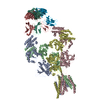 8vuuMC 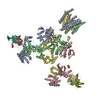 8vuhC 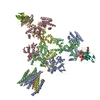 8vujC 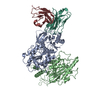 8vulC 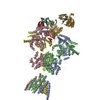 8vunC 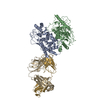 8vuqC  8vurC 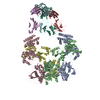 8vusC 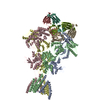 8vutC 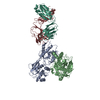 8vuvC  8vuyC 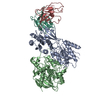 8vvhC M: atomic model generated by this map C: citing same article ( |
|---|---|
| Similar structure data | Similarity search - Function & homology  F&H Search F&H Search |
- Links
Links
| EMDB pages |  EMDB (EBI/PDBe) / EMDB (EBI/PDBe) /  EMDataResource EMDataResource |
|---|---|
| Related items in Molecule of the Month |
- Map
Map
| File |  Download / File: emd_43540.map.gz / Format: CCP4 / Size: 303.3 MB / Type: IMAGE STORED AS FLOATING POINT NUMBER (4 BYTES) Download / File: emd_43540.map.gz / Format: CCP4 / Size: 303.3 MB / Type: IMAGE STORED AS FLOATING POINT NUMBER (4 BYTES) | ||||||||||||||||||||||||||||||||||||
|---|---|---|---|---|---|---|---|---|---|---|---|---|---|---|---|---|---|---|---|---|---|---|---|---|---|---|---|---|---|---|---|---|---|---|---|---|---|
| Projections & slices | Image control
Images are generated by Spider. | ||||||||||||||||||||||||||||||||||||
| Voxel size | X=Y=Z: 0.856 Å | ||||||||||||||||||||||||||||||||||||
| Density |
| ||||||||||||||||||||||||||||||||||||
| Symmetry | Space group: 1 | ||||||||||||||||||||||||||||||||||||
| Details | EMDB XML:
|
-Supplemental data
-Half map: #1
| File | emd_43540_half_map_1.map | ||||||||||||
|---|---|---|---|---|---|---|---|---|---|---|---|---|---|
| Projections & Slices |
| ||||||||||||
| Density Histograms |
-Half map: #2
| File | emd_43540_half_map_2.map | ||||||||||||
|---|---|---|---|---|---|---|---|---|---|---|---|---|---|
| Projections & Slices |
| ||||||||||||
| Density Histograms |
- Sample components
Sample components
-Entire : Human GluN1-2B with Fab 007-168
| Entire | Name: Human GluN1-2B with Fab 007-168 |
|---|---|
| Components |
|
-Supramolecule #1: Human GluN1-2B with Fab 007-168
| Supramolecule | Name: Human GluN1-2B with Fab 007-168 / type: complex / ID: 1 / Parent: 0 / Macromolecule list: all |
|---|---|
| Source (natural) | Organism:  Homo sapiens (human) Homo sapiens (human) |
-Macromolecule #1: Glutamate receptor ionotropic, NMDA 1
| Macromolecule | Name: Glutamate receptor ionotropic, NMDA 1 / type: protein_or_peptide / ID: 1 / Number of copies: 2 / Enantiomer: LEVO |
|---|---|
| Source (natural) | Organism:  Homo sapiens (human) Homo sapiens (human) |
| Molecular weight | Theoretical: 92.012109 KDa |
| Recombinant expression | Organism:  |
| Sequence | String: DPKIVNIGAV LSTRKHEQMF REAVNQANKR HGSWKIQLNA TSVTHKPNAI QMALSVCEDL ISSQVYAILV SHPPTPNDHF TPTPVSYTA GFYRIPVLGL TTRMSIYSDK SIHLSFLRTV PPYSHQSSVW FEMMRVYSWN HIILLVSDDH EGRAAQKRLE T LLEERESK ...String: DPKIVNIGAV LSTRKHEQMF REAVNQANKR HGSWKIQLNA TSVTHKPNAI QMALSVCEDL ISSQVYAILV SHPPTPNDHF TPTPVSYTA GFYRIPVLGL TTRMSIYSDK SIHLSFLRTV PPYSHQSSVW FEMMRVYSWN HIILLVSDDH EGRAAQKRLE T LLEERESK AEKVLQFDPG TKNVTALLME AKELEARVII LSASEDDAAT VYRAAAMLNM TGSGYVWLVG EREISGNALR YA PDGILGL QLINGKNESA HISDAVGVVA QAVHELLEKE NITDPPRGCV GNTNIWKTGP LFKRVLMSSK YADGVTGRVE FNE DGDRKF ANYSIMNLQN RKLVQVGIYN GTHVIPNDRK IIWPGGETEK PRGYQMSTRL KIVTIHQEPF VYVKPTLSDG TCKE EFTVN GDPVKKVICT GPNDTSPGSP RHTVPQCCYG FCIDLLIKLA RTMNFTYEVH LVADGKFGTQ ERVNNSNKKE WNGMM GELL SGQADMIVAP LTINNERAQY IEFSKPFKYQ GLTILVKKEI PRSTLDSFMN PFQSTLWLLV GLSVHVVAVM LYLLDR FSP FGRFKVNSEE EEEDALTLSS AMWFSWGVLL NSGIGEGAPR SFSARILGMV WAGFAMIIVA SYTANLAAFL VLDRPEE RI TGINDPRLRN PSDKFIYATV KQSSVDIYFR RQVELSTMYR HMEKHNYESA AEAIQAVRDN KLHAFIWDSA VLEFEASQ K CDLVTTGELF FRSGFGIGMR KDSPWKQNVS LSILKSHENG FMEDLDKTWV RYQECDSRSN APATLTFENM AGVFMIVAG GIVAGIFLIF IEIAYKSRA UniProtKB: Glutamate receptor ionotropic, NMDA 1 |
-Macromolecule #2: Glutamate receptor ionotropic, NMDA 2B
| Macromolecule | Name: Glutamate receptor ionotropic, NMDA 2B / type: protein_or_peptide / ID: 2 / Number of copies: 2 / Enantiomer: LEVO |
|---|---|
| Source (natural) | Organism:  Homo sapiens (human) Homo sapiens (human) |
| Molecular weight | Theoretical: 91.534438 KDa |
| Recombinant expression | Organism:  |
| Sequence | String: SPPSIGIAVI LVGTSDEVAI KDAHEKDDFH HLSVVPRVEL VAMNETDPKS IITRICDLMS DRKIQGVVFA DDTDQEAIAQ ILDFISAQT LTPILGIHGG SSMIMADKDE SSMFFQFGPS IEQQASVMLN IMEEYDWYIF SIVTTYFPGY QDFVNKIRST I ENSFVGWE ...String: SPPSIGIAVI LVGTSDEVAI KDAHEKDDFH HLSVVPRVEL VAMNETDPKS IITRICDLMS DRKIQGVVFA DDTDQEAIAQ ILDFISAQT LTPILGIHGG SSMIMADKDE SSMFFQFGPS IEQQASVMLN IMEEYDWYIF SIVTTYFPGY QDFVNKIRST I ENSFVGWE LEEVLLLDMS LDDGDSKIQN QLKKLQSPII LLYCTKEEAT YIFEVANSVG LTGYGYTWIV PSLVAGDTDT VP AEFPTGL ISVSYDEWDY GLPARVRDGI AIITTAASDM LSEHSFIPEP KSSCYNTHEK RIYQSNMLNR YLINVTFEGR DLS FSEEGY QMHPKLVIIL LNKERKWERV GKWKDKSLQM KYYVWPRMCP ETEEQEDDHL SIVTLEEAPF VIVESVDPLS GTCM RNTVP CEKRIVTENK TDEEPGYIKK CCKGFCIDIL KKISKSVKFT YDLYLVTNGK HGKKINGTWN GMIGEVVMKR AYMAV GSLT INEERSEVVD FSVPFIETGI SVMVSRSNGT VSPSAFLEPF SADVWVMMFV MLLIVSAVAV FVFEYFSPVG YNRCLA DGR EPGGPSFTIG KAIWLLWGLV FNNSVPVQNP KGTTSKIMVS VWAFFAVIFL ASYTANLAAF MIQEEYVDQV SGLSDKK FQ RPNDFSPPFR FGTVPNGSTE RNIRNNYAEM HAYMGKFNQR GVDDALLSLK TGKLDAFIYD AAVLNYMAGR DEGCKLVT I GSGKVFASTG YGIAIQKDSG WKRQVDLAIL QLFGDGEMEE LEALWLTGIC HNEKNEVMSS QLDIDNMAGV FYMLGAAMA LSLITFISEH LFYWQ UniProtKB: Glutamate receptor ionotropic, NMDA 2B |
-Macromolecule #3: 007-168 Heavy
| Macromolecule | Name: 007-168 Heavy / type: protein_or_peptide / ID: 3 / Number of copies: 2 / Enantiomer: LEVO |
|---|---|
| Source (natural) | Organism:  Homo sapiens (human) Homo sapiens (human) |
| Molecular weight | Theoretical: 22.52225 KDa |
| Recombinant expression | Organism:  Homo sapiens (human) Homo sapiens (human) |
| Sequence | String: QVQLVQSGAE AKKPGESLKI SCKASGYSFT TFWIGWVRQM PGSGLEWIGI IYPGDSDTRY SPSFQGHVTI SADRSTSTAY LQWSSLKAS DTAMYYCARS AVFDYWGQGT LVTVSSASTK GPSVFPLAPS SGTAALGCLV KDYFPEPVTV SWNSGALTSG V HTFPAVLQ ...String: QVQLVQSGAE AKKPGESLKI SCKASGYSFT TFWIGWVRQM PGSGLEWIGI IYPGDSDTRY SPSFQGHVTI SADRSTSTAY LQWSSLKAS DTAMYYCARS AVFDYWGQGT LVTVSSASTK GPSVFPLAPS SGTAALGCLV KDYFPEPVTV SWNSGALTSG V HTFPAVLQ SSGLYSLSSV VTVPSSSLGT QTYICNVNHK PSNTKVDKKV EPK |
-Macromolecule #4: 007-168 Light
| Macromolecule | Name: 007-168 Light / type: protein_or_peptide / ID: 4 / Number of copies: 2 / Enantiomer: LEVO |
|---|---|
| Source (natural) | Organism:  Homo sapiens (human) Homo sapiens (human) |
| Molecular weight | Theoretical: 23.455982 KDa |
| Recombinant expression | Organism:  Homo sapiens (human) Homo sapiens (human) |
| Sequence | String: EIVMTQSPAT LSVSPGGRAT LSCRASQSVS SNLAWYQQKP GQAPRLLIYG ASTRATGIPV RFSGSGSGTE FTLTISSLQS EDFAVYYCQ QYNNWPTSWT FGQGTKLEIK RTAAAPSVFI FPPSDEQLKS GTASVVCLLN NFYPREAKVQ WKVDNALQSG N SQESVTEQ ...String: EIVMTQSPAT LSVSPGGRAT LSCRASQSVS SNLAWYQQKP GQAPRLLIYG ASTRATGIPV RFSGSGSGTE FTLTISSLQS EDFAVYYCQ QYNNWPTSWT FGQGTKLEIK RTAAAPSVFI FPPSDEQLKS GTASVVCLLN NFYPREAKVQ WKVDNALQSG N SQESVTEQ DSKDSTYSLS STLTLSKADY EKHKLYACEV THQGLSSPVT KSFNRGE |
-Experimental details
-Structure determination
| Method | cryo EM |
|---|---|
 Processing Processing | single particle reconstruction |
| Aggregation state | particle |
- Sample preparation
Sample preparation
| Buffer | pH: 7.5 |
|---|---|
| Vitrification | Cryogen name: ETHANE |
- Electron microscopy
Electron microscopy
| Microscope | FEI TITAN KRIOS |
|---|---|
| Image recording | Film or detector model: GATAN K3 (6k x 4k) / Average electron dose: 60.0 e/Å2 |
| Electron beam | Acceleration voltage: 300 kV / Electron source:  FIELD EMISSION GUN FIELD EMISSION GUN |
| Electron optics | Illumination mode: OTHER / Imaging mode: OTHER / Cs: 2.7 mm / Nominal defocus max: 2.2 µm / Nominal defocus min: 0.8 µm |
| Experimental equipment |  Model: Titan Krios / Image courtesy: FEI Company |
 Movie
Movie Controller
Controller




























 Z (Sec.)
Z (Sec.) Y (Row.)
Y (Row.) X (Col.)
X (Col.)




































